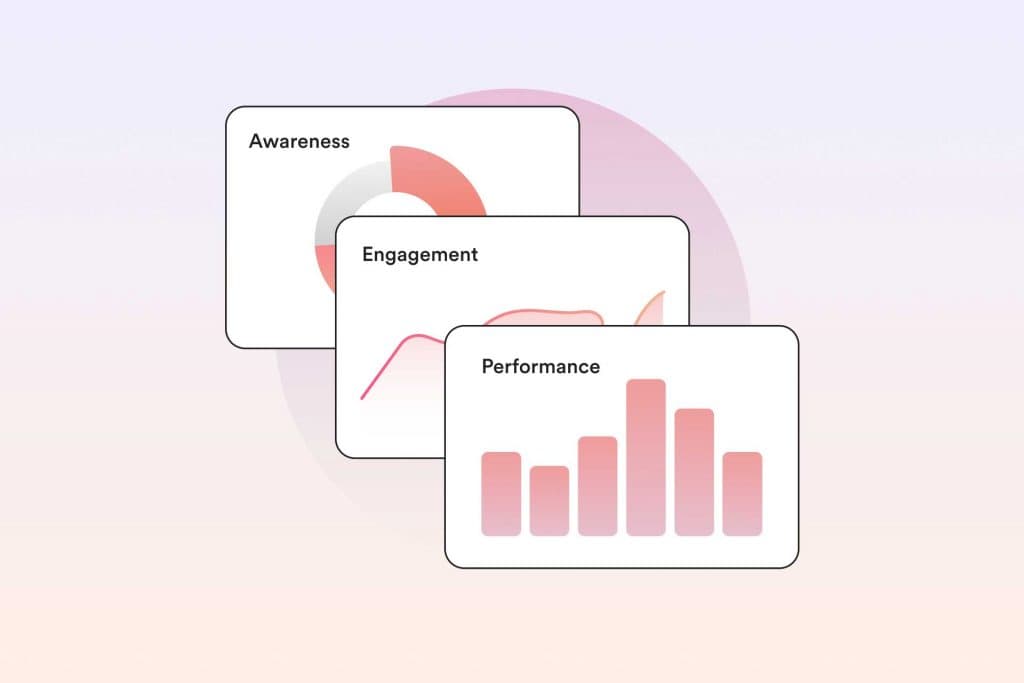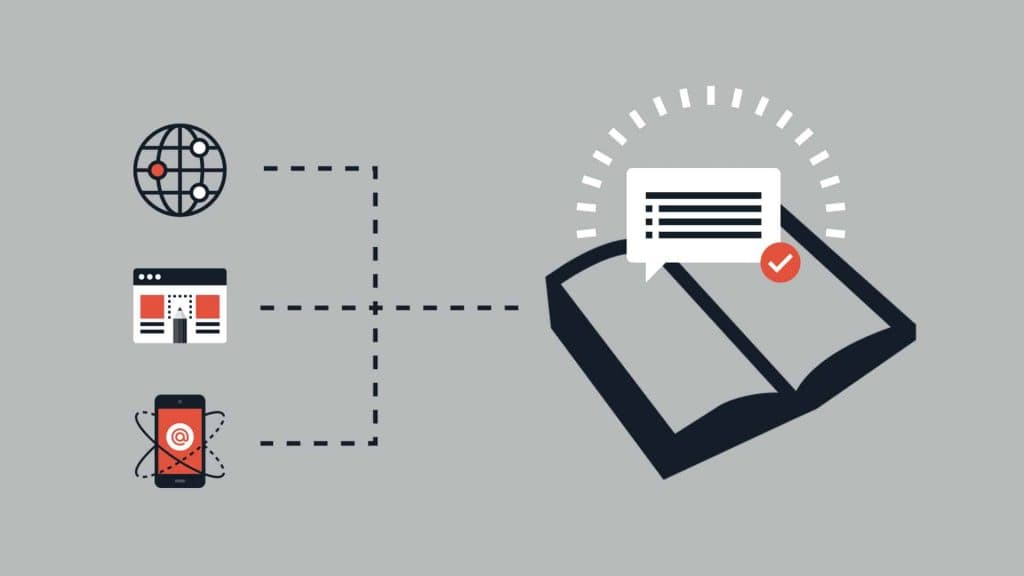How to Measure Content Marketing Performance
When it comes to content marketing, if you can't measure it, you can't manage it. Without proper metrics and analytics, you’re flying blind, wasting precious time and resources.
But with the right KPIs and tools to track them, you gain invaluable insight into what's working well and needs improvement. From there, you can double down on high-performing content and optimise or axe underperforming pieces. This data-driven approach is critical for creating a sustainable content strategy that delivers results.
Simply put: What gets measured gets managed. I'll walk you through the key metrics and methods to measure content marketing performance so you can improve engagement, lead gen, and ROI.
Table of Contents
Align Goals and KPIs

The first step is clearly defining your goals and identifying the best KPIs to track for those goals. Without strategic alignment, you’ll quickly become overwhelmed by all the vanity metrics that don’t indicate performance.
Common Content Marketing Goals
While goals differ across businesses, most share a few common ones:
- Engagement – Increase interaction, time-on-site, shares, etc.
- Lead generation – Capture more qualified leads or sales inquiries
- Revenue impact – Drive direct sales or customer lifetime value
- Brand building – Improve awareness, consideration, loyalty
Once you clarify your content's primary goal(s), you can pinpoint the KPIs that indicate progress.
Key Performance Indicators (KPIs) to Track
Here are the most insightful metrics to track based on critical goals:
Engagement KPIs
- Pageviews
- Time on page/site
- Bounce rate
- Scroll depth
- Social shares
- Comments
- Email clickthrough rate
Lead Generation KPIs
- Form fill rate
- Demo requests
- Newsletter signups
- Content downloads
Revenue Impact KPIs
- Direct sales revenue
- Sales inquiries/callbacks
- Marketing qualified leads (SQL)
- Multi-touch attribution
Brand KPIs
- Brand awareness lift
- Consideration/favorability lift
- Referral traffic
- Loyalty metrics
Prioritising one or two KPIs for each goal provides focus and prevents tracking paralysis. You can always add more later once processes are in place.
Implement Tracking and Analytics

Now for the fun part: measuring the metrics! Proper tracking ensures clean, accurate data flows into your analytics platforms.
Track Engagement Metrics
Most engagement data lives on your website, so focus efforts here first. Use Google Analytics, Twitter/Facebook analytics, and listener apps like Hotjar or Mouseflow to monitor engagement KPIs.
Key setup steps include:
- Event tracking – Track video views, CTAs, file downloads, etc.
- Campaign tagging – Identify channels driving traffic
- UTM parameters – Tag links in social posts and emails
- Custom dashboards – Curate critical metric visualisations
- Annotate changes – Note updates that impact metrics
Track Lead Gen Metrics
Leads come from many sources, so tracking requires consolidating data into your CRM and marketing automation platform (MAP).
- Lead forms – Connect forms to CRM to track submissions
- Call tracking – Use unique phone numbers per campaign
- Landing pages – Link to forms to assign leads
- UTMs – Tag links to identify lead sources
- MQL processes – Review and qualify inbound leads
Following up swiftly helps convert more fresh leads into sales.
Attribute Revenue Impact
Tie revenue directly to content by tracking customer journeys across touchpoints.
- Lead scoring – Gauge sales readiness based on activity
- MAP workflows – Define multi-channel process models
- Referral codes – Create campaign-specific promo codes
- Lifetime value – Analyse customer value over time
- Identify reactivations – Win back disengaged subscribers
While complex, even marginal gains justify the effort.
Choose the Right Metrics Reporting Tools

With tracking in place, the next task involves selecting metrics tools for analysing performance data.
Your chosen platforms depend on your budget, technical expertise, and reporting requirements.
Best Bang for Buck
For small teams with limited resources, leverage a mix of free platforms:
- Google Analytics – Powerful for site engagement and conversion insights
- Google Data Studio – Build customised dashboards by connecting data sources
- Facebook Analytics – Provides social engagement and follower insights
- Email service provider (ESP) reports – Email performance tracking from Mailchimp, Constant Contact, etc.
Advanced & Automated Reporting
Mid-sized to large companies often utilise paid reporting tools for automated, advanced analytics:
- Tableau – Manipulate giant integrated data sets on demand
- Looker – Code-free custom reporting with scheduling and alerting
- Microsoft Power BI – Interactive data visualisations and AI-driven insights
- Domo – Unified access to 100+ data connectors
These tools shine but require significant training and setup. Consider consulting help to accelerate time-to-value.
All-In-One Content Marketing Platforms
To simplify tracking across content types and touchpoints, all-in-one content platforms are emerging as an option:
- NewsCred – Unified analytics for ideation to distribution
- Percolate – Integrated reporting from strategy to channels
- Skyword – Provides automatic content performance scoring
These niche tools deliver consolidated reporting but can present vendor lock-in risks.
Choose based on available integrations and ease of use for your team.
Analyse Metrics Deeply to Optimise Content

Now for the fun part: reviewing and acting upon all this significant performance data!
Analysing metrics manually could be more effective, given dynamic volumes across channels. Instead, adopt agile processes to assess what’s working periodically and rapidly shift gears.
Here is a proven workflow for driving rapid wins:
1. Schedule Reviews
Mark your calendar for biweekly or monthly reviews to prevent analysis paralysis. Cadence ensures you revisit the same metrics consistently versus spot-checking.
Assign analysis tasks to owners across your team to distribute workloads.
2. Pull Reports
Compile reports on core metrics before each working session—Automate where possible with dashboarding tools.
Prior meetings allow participants to digest insights versus cold calls.
3. Mine for Insights
Now, conduct working sessions to spotlight trends and form hypotheses on what’s driving results.
Bring cross-functional partners to enrich perspectives during collaborative reviews, including content, social, PR, sales, and execs.
4. Test via Optimisation
Isolate content experiments across high/low performers to validate theories on engagement drivers.
Create testing backlogs to scale learnings across titles and channels.
5. Improve and Repeat
Finally, apply lessons learned to optimise content strategy and processes.
Rinse and repeat frequently as part of continual improvement.
This agile workflow develops metrics fluency across the organisation, which is critical for content success.
Common Content Marketing Metrics Pitfalls

While vital for managing content performance, metrics tracking does present a few common pitfalls to avoid:
Vanity over Value – Focusing on non-strategic metrics like social media followers or shares rather than business impact.
Data Paralysis – Tracking so many metrics that you become frozen by details versus taking action.
Inconsistent Tracking – Forgetting to tag campaigns or implement new metrics consistently across channels.
Outdated Benchmarks – Comparing results to old averages rather than current baselines.
Narrow Perspectives – Reviewing reports in isolation without cross-functional insights into performance drivers.
You can circumvent these issues by concentrating on 2-3 goal-aligned KPIs, tagging thoroughly, establishing dynamic benchmarks, and fostering continual testing.
Key Takeaways and Next Steps
Measuring content marketing doesn’t need to be a dark art – as long as you ground efforts in strategic alignment, efficient tracking, and agile optimisation.
Key takeaways include:
- Base goals/KPIs on core business priorities
- Implement holistic tracking across buyer journeys
- Automate reporting where possible
- Review metrics frequently and collaboratively
- Test hypotheses through ongoing experimentation
- Optimise based on learnings before moving to the next experiment
You build essential metrics fluency by iterating continuously, enabling data-driven decisions and superior ROI.
For the following steps, conduct an audit to identify current tracking and reporting gaps relative to your target business goals. Classify gaps by ease of implementation (easy vs. heavy lift). Build a roadmap to phase top priorities over the next quarter.
Leverage the frameworks above to accelerate your content analytics IQ and propel marketing performance to the next level. The improvement will be measured…literally!
Now, make some metrics magic!
Conclusion
Implementing a robust analytics framework for your content marketing requires upfront strategic planning and technical heavy lifting. But once the tracking and reporting foundations are in place, the payoff is invaluable…and ongoing.
Performance data delivers the insights needed to continually rebalance and optimise investments based on impact across content types and channels. Over time, tweaking your mix toward high-performing assets will reap compounding returns.
With market dynamics continually evolving across media platforms, customer journeys, and business priorities, what engages audiences today likely differs from next year. Analytics transforms guesswork on optimal content into confidence rooted in hard metrics.
So, while daunting initially, stick with the tracking plan detailed above. Over time, the compounding benefits will far outweigh the costs, thanks to data-driven agility, relevance, and personalisation. Load up that dashboard and fill it with some insightful metrics!
How to Measure Content Marketing (FAQs)
What are the three most important metrics to track?
The three most important metrics are:
Conversion rate – Measure users taking your desired action (signup, download, sale, etc.)
Engagement duration – Gauge time spent consuming content across channels
Revenue impact – Directly tie content to pipeline and sales where possible
These indicators deliver actionable insights into content effectiveness.
How often should I review content metrics?
Aim to review core metrics at least biweekly, if not weekly. High frequency ensures you can respond rapidly to changes or new patterns in the data before they stall momentum, monthly at a minimum.
How do I make reporting actionable across my organisation?
Establish standard templates/cadence for analysis
Assign tasks to owners with metrics expertise
Foster collaboration during working sessions
Create experiments backlog to scale learnings
Distill recommendations to execs clearly
Can I automate content analytics?
Absolutely. All-in-one content marketing platforms like NewsCred, Percolate, and Skyword provide automated scoring/benchmarking. Solutions like Tableau, Looker, Power BI, and Google Data Studio can ingest data flows and visualise/share dynamically updated dashboards for self-managed analytics.
What’s more valuable – platform metrics or a custom model?
Generally, custom measurements aligned tightly to business goals deliver superior insights despite more effort. However, leverage platform benchmarks during initial measurement phases or for supplementary context. Blend both approaches over time.
